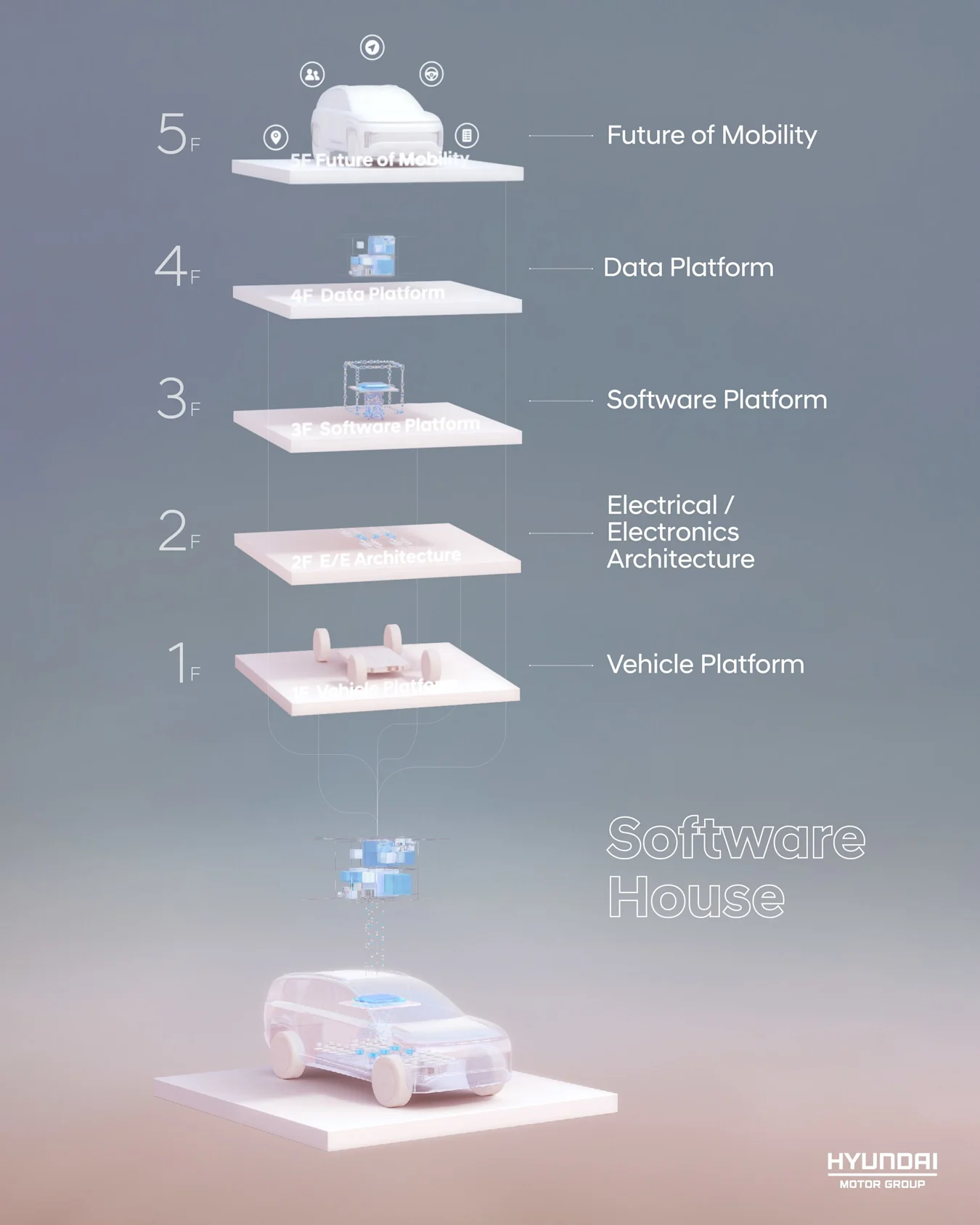Though already having some success with its Ioniq lineup, Hyundai has far bigger plans for its EV future — including taking a page from Tesla in terms of software updates. The automaker just unveiled a new roadmap, saying it’ll invest $12.6 billion to transform its lineup across brands into “Software Defined Vehicles” (SDVs).
As part of that, it’s developing new platforms and a new Connected Car Operating System (CCOS). It wants all its vehicles (both ICE and EV) to be over-the-air (OTA) capable by 2025, at which point it expects to have 20 million connected vehicles on the road.
The first leg in Hyundai’s plans is two new EV platforms called eM and eS for Hyundai, Kia and Genesis vehicles based on its Integrated Modular Architecture (IMA) announced earlier this year. The eM platform will be used for consumer EVs in all segments, offering 50 percent more range on a charge than current models, according to Hyundai. It’ll also support Level 3 and higher self-driving levels. Meanwhile, the eS platform is designed for logistics, deliveries and other business segments.
The idea is to have more more modularity and standardization for components like batteries and motors, helping streamline production and cut costs. Critically, it’ll also let Hyundai use the same vehicle controller across brands and segments, making OTA software and “Feature on Demand” (FoD) upgrades possible.

Hyundai Motor Group
Another key part of the roadmap is the software platform. The group will use something Hyundai calls the Connected Car Operating System (ccOS), applied to all controllers and using “extremely high computing power.” To achieve that, it’s working with NVIDIA on loading an optimized version of ccOS onto NVIDIA DRIVE, its next-gen chipset for autonomous driving and other vehicle functions.
Speaking of that, it also plans to advance its autonomous driving tech. The ccOS operating system is a key part of that, processing all the data collected by cameras, radars and LiDARs mounted in vehicles. Hyundai hopes to use ccOS to commercialize Level 3 vehicles soon, and go to Level 4 and 5 “in due course.”
“This year, the Group will apply an advanced Highway Driving Pilot (HDP) on the Genesis G90, which is a Level 3 technology for autonomous driving based on the second-generation integrated controller,” said Hyundai’s autonomous driving head Woongjun Jang. “The Group is also developing its Remote Parking Pilot (RPP) for Level 3 autonomous driving.”
To accomplish all that, Hyundai Group plans to invest 18 trillion won ($12.6 billion) by 2030, which will go toward building a Global Software Center and be ploughed into research. “This will pace the Group at the forefront of providing entirely new mobility solutions as society changes, transportation means evolve, and software defined vehicles become commonplace,” according to the press release.
All products recommended by Engadget are selected by our editorial team, independent of our parent company. Some of our stories include affiliate links. If you buy something through one of these links, we may earn an affiliate commission. All prices are correct at the time of publishing.
Credit: Source link


Comments are closed.